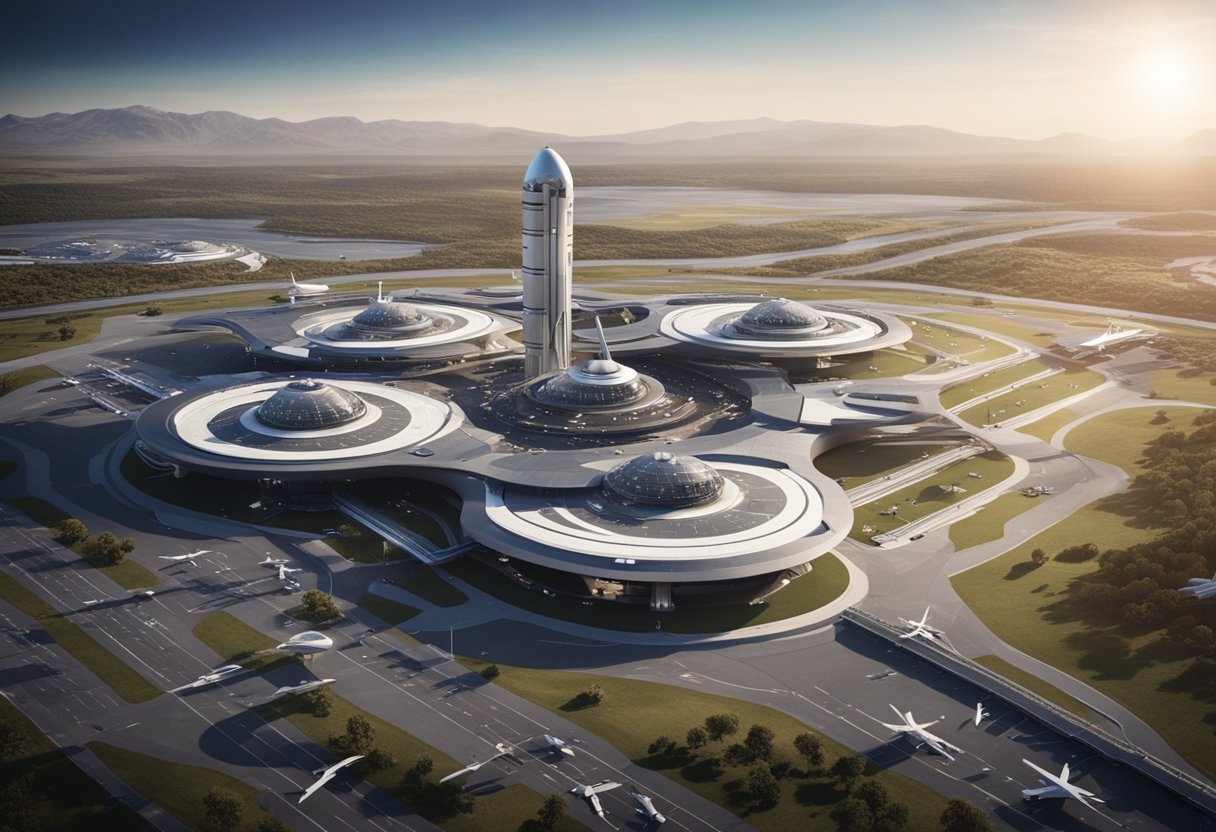
Spaceport Infrastructure – As society’s ventures into the cosmos accelerate, the development of spaceports becomes ever more crucial to the ambitions and operations of both commercial and governmental space endeavours. Spaceports act as the backbone of space infrastructure, not merely as launch and landing sites but also as hubs for technological innovation, operational management, and economic growth. The thoughtful planning and construction of spaceport facilities is a complex interplay of engineering, regulatory adherence, and strategic investment, which paves the way for their role in burgeoning space economies.
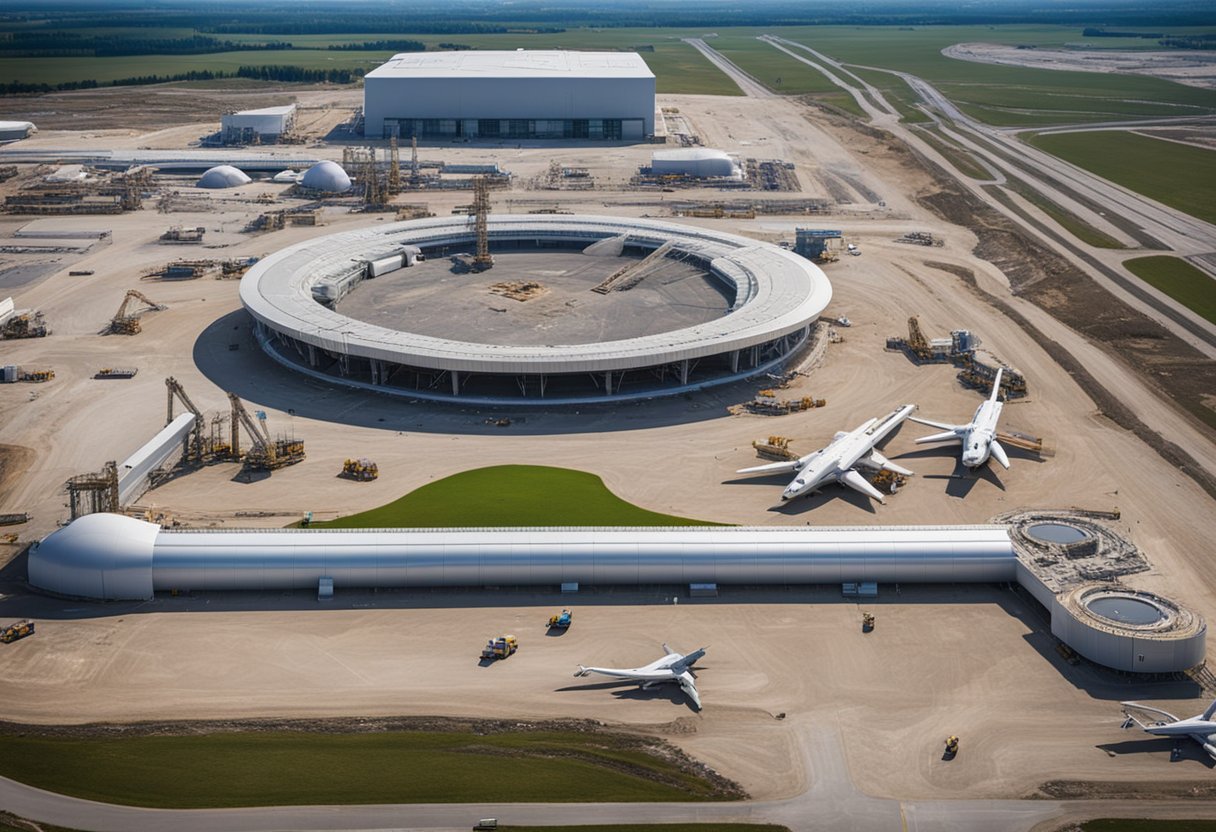
To achieve the vision of a networked spaceport system, it’s imperative that partnerships across the sector are strengthened. This includes synergy between commercial entities, such as those showcased on SpaceVoyageVentures.com, and government agencies, ensuring safe, efficient, and lucrative spaceport operations. The incorporation of advanced technology and innovative solutions into spaceport design and management not only improves efficiency but also fosters new business opportunities, accommodating future missions and catering to an ever-growing space-faring populace.
In exploring the journey of spaceports, we find a narrative that stretches from the origins of space exploration to modern ventures poised to enable space tourism. The transformation from military test sites to commercial gateways to the cosmos reflects the dynamic evolution of space infrastructure.
Ellington Airport, located in Houston, Texas, serves as a prime example of a legacy facility transitioning into the modern spaceport era. Initially established for military purposes, it has been earmarked for a new role in commercial spaceflight, signifying the adaptability of existing infrastructure to emerging space industry needs.
The Kennedy Space Center, on the other hand, has been at the forefront of space exploration since the 1960s. Situated adjacent to Cape Canaveral Air Force Station, it has launched notable missions such as the Apollo moon landings. Today, it remains a central hub, not only for governmental spaceflight but increasingly for commercial launches as well.
Launch sites have undergone significant transformation, from servicing solely government programs to facilitating a burgeoning commercial space sector. Cape Canaveral is emblematic of this shift. Initially an Air Force missile testing range, it has transitioned into a thriving launch hub for both government and private ventures.
As we look to the future, companies like SpaceVoyage Ventures anticipate ports like Ellington Airport playing a critical role as staging grounds for space tourism, where travellers may one day embark on extraterrestrial journeys.
Through these transitions, spaceports continue to evolve, accommodating legacy space missions while forging a path for new, innovative access to space.
In shaping the future of space travel and exploration, we must focus on methodical spaceport infrastructure design, ensuring that every phase, from master planning to innovative construction, is meticulously strategised and executed.
We recognise that a comprehensive master plan is crucial for the sustainable evolution of spaceport infrastructure. This plan serves as a blueprint, encompassing long-term objectives, land use designation, and detailed phasing of development. Our master planning process is holistic, considering not only the immediate needs for launch and reentry operations but also the future demands of the industry.
Our strategies in infrastructure development are fuelled by innovation; they are crafted to adapt to the dynamic nature of space transportation. For every site, we implement a tailored approach, considering the unique geographical and environmental conditions. This ensures that our facilities support a wide array of space vehicles and are equipped with resilient utilities and ground support equipment.
The adoption of innovative construction techniques is indispensable in our pursuit to construct state-of-the-art spaceports. We employ advanced materials and building methods that not only enhance the efficiency and safety standards but also reduce environmental impact. Among such innovations are modular designs that enable rapid assembly and reconfiguration, catering to the evolving space industry.
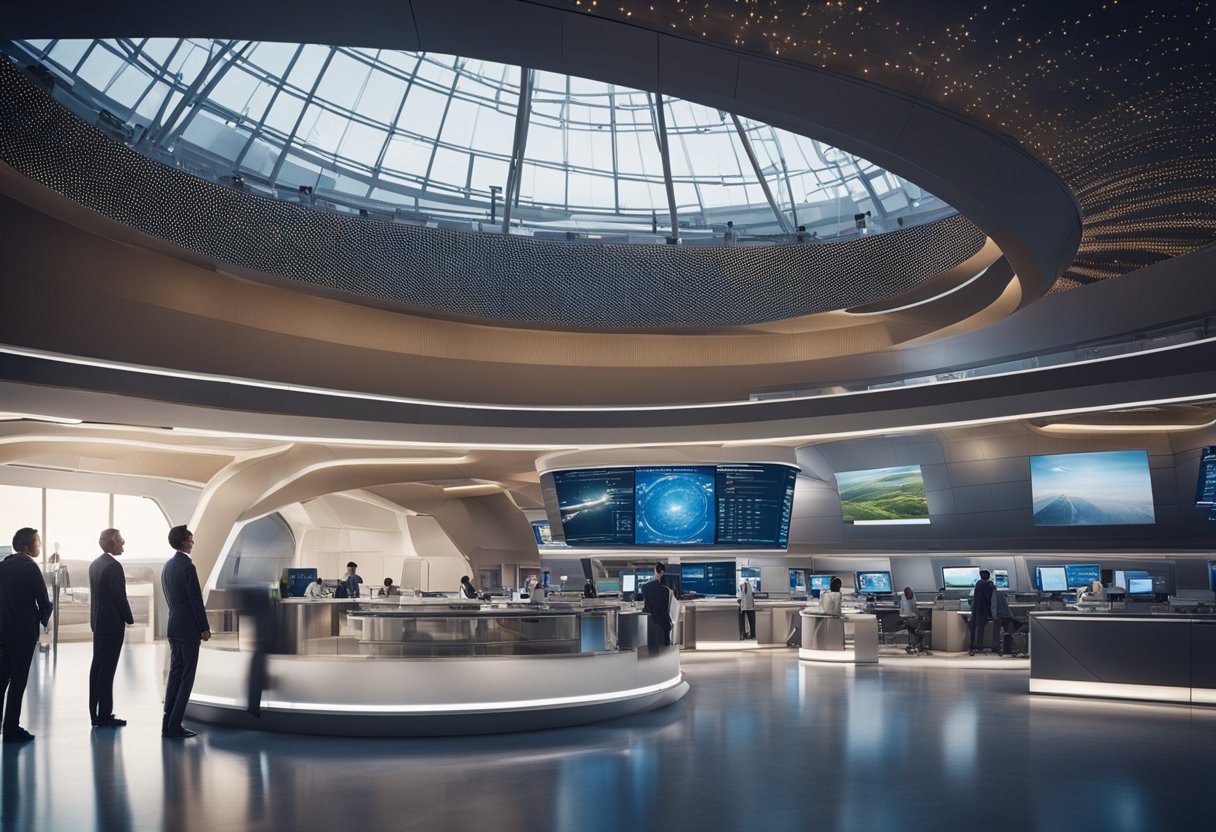
To ensure the successful development of spaceport infrastructure, it is imperative to adhere to a stringent regulatory framework and to uphold the highest safety standards. This involves both government regulations, which lay the groundwork for spaceport operation, and detailed safety regulations that provide oversight throughout the lifecycle of spaceport activities.
We recognise that government regulations serve as the foundation for the burgeoning spaceport industry. The Federal Aviation Administration (FAA) is responsible for modernising U.S. launch and reentry site regulations, aiming to maintain a competitive commercial space transportation infrastructure. Furthermore, the establishment of the National Spaceport Interagency Working Group constitutes a strategic move to support the nation’s leadership in space transportation through collaboration on policy development.
When it comes to safety regulations, we uphold rigorous standards and oversight mechanisms. Our commitment is reflected in prioritising specific safety and regulatory criteria that minimise risks associated with spaceport operations and spaceflight. Operational considerations are continuously addressed, ensuring that all activities comply with safety guidelines. For instance, Advanced Air Mobility Vertiport Considerations highlight the significance of safety in the design and implementation of vertiports, which are crucial to the commercial viability and sustainability of space tourism offered by initiatives like SpaceVoyageVentures.com.

In this section, we delve into the pivotal role that both commercial entities and governmental organisations play in the advancement of spaceport infrastructure.
We recognise the significant contributions that aerospace companies make to spaceport development. Through innovative partnerships, national agencies like NASA have the opportunity to leverage private sector advancements in technology and operations. For instance, through cooperative agreements, companies are instrumental in designing launch facilities at commercial spaceports. These partnerships often result in the sharing of resources, which can lead to more efficient use of government funds and acceleration of spaceport innovation.
Academia offers a unique and valuable perspective in the development of spaceports. Collaborative efforts between universities and space organizations, such as NASA, provide essential research and development support. The influence of academia is seen in areas such as sustainable design practices and advanced engineering concepts. Universities can also serve as fertile grounds for workforce development, preparing a new generation of engineers, scientists, and policy makers to further enhance the commercial spaceport infrastructure.
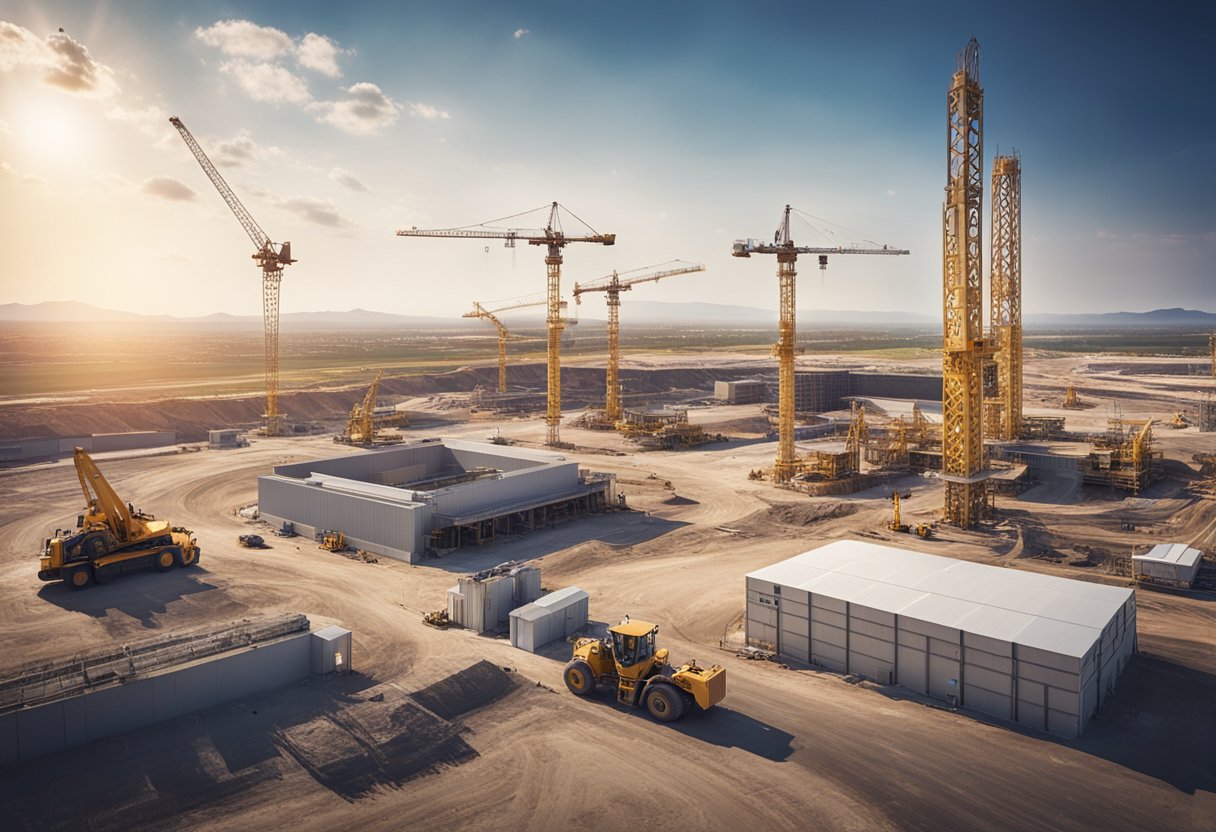
In this section, we explore the significant financial commitments and the resulting economic repercussions within the spaceport infrastructure sphere, spotlighting the vitality of investment and funding as well as the resultant job creation and economic growth.
We’ve observed a trend of escalating financial support in the spaceport field. Notably, in 2022, investment activity experienced a decline; however, approximately 430 companies reportedly received investment. The ten largest deals culminated in $700 million, signifying an 18% amplification from 2021. Moreover, significant state-sponsored initiatives, such as the allocation of funding by the FAA Reauthorization Act of 2018 which allotted $4.35 billion annually through 2023, including discretionary funding, have been instrumental in this sector.
The establishment of spaceports is a potent driver for regional economic stimulation, endeavouring to create high-paying jobs and fostering economic progress. For instance, Spaceport America has been a key player, heavily financed by New Mexico and contributing counties to energise the space industry. By FY2024, it’s forecasted to generate an economic impact of $956 million. Furthermore, Space Florida is prioritising aerospace infrastructure expansion, which will extend the state’s spaceport system territory. This move is set to fortify Florida’s economy and fortify military resilience, signalling steadfast interest in space infrastructure as a prosperous economic avenue.
While space tourism is in its nascence, the potential for economic impact through ventures such as SpaceVoyageVentures.com cannot be understated, poised to become a pivotal element in the space economy’s diversification.
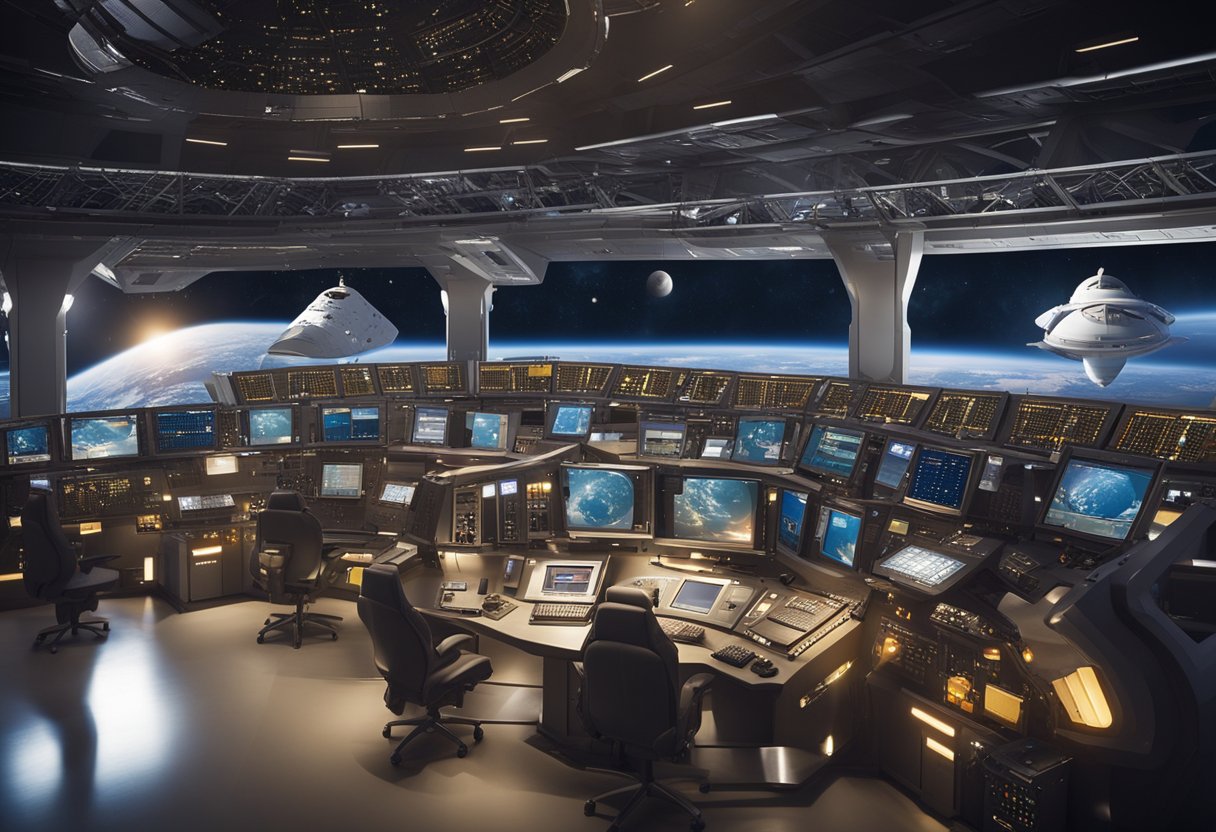
Effective spaceport operations and management are critical for the burgeoning space industry, with daily activities and commercial oversight being fundamental to the success of these facilities.
Daily operations at a spaceport encompass a broad array of tasks aimed at ensuring readiness for spaceflight activities. We meticulously plan and schedule launches, manage airspace and ground space traffic, and oversee strict adherence to safety protocols. Our team coordinates:
Assuring all systems and personnel are ‘go’ for launch forms the crux of our daily schedule.
Management of a commercial spaceport requires a blend of technical expertise and business acumen. We focus on:
Within this sphere, we strive to bridge the gap between groundbreaking space exploration and market-driven strategies.
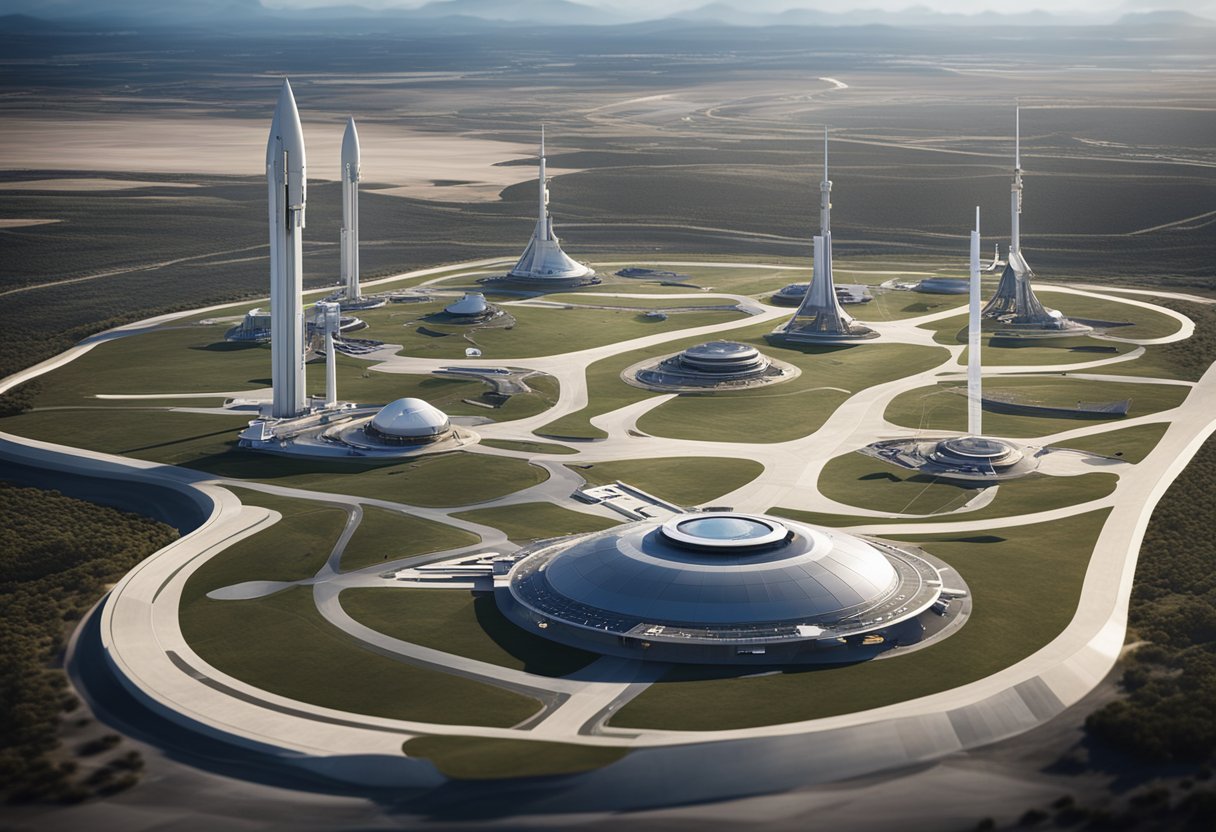
We recognise that the forefront of space exploration is heavily reliant on the progression of technology and the development of innovative solutions at spaceports. Spaceports are not just launch and landing sites; they are hubs equipped with sophisticated infrastructure supporting next-generation spacecraft and providing a plethora of services optimised for space industry advancements.
Spaceports house and facilitate cutting-edge spacecraft that feature revolutionary propulsion systems and materials. The evolution of reusable rocket technology has drastically altered our launch economics, allowing more frequent and cost-effective trips to orbit. Further advancements include the integration of artificial intelligence to bolster navigational precision and reliability. Our support for this dynamic field draws on the findings from institutions, such as research from the International Information and Engineering Technology Association, which recognises the importance of such technologies in the sustainability of spaceports.
We strive to create a foundation for multifaceted spaceport services. These services encompass more than launch preparations, as they include advanced data analysis and satellite servicing facilities. Spaceports like Spaceport Cornwall are diversifying their portfolio by offering services that cater to space tourism, an industry with significant growth potential, showcased by platforms like SpaceVoyageVentures.com. Moreover, we are fostering collaborations with private entities to provide cutting-edge innovation, such as advanced traffic management systems for space vehicles.
The pioneering work in both spacecraft technology and innovative services is what positions us at the vanguard of the new space economy. Our commitment to these developments ensures we remain at the cutting edge, driving the industry forwards.
The landscape of spaceport development is undergoing significant transformation, with various countries vying for a competitive edge and seeking to collaborate internationally. This expansion caters not only to traditional aerospace activities but also burgeoning space tourism ventures, like those chronicled by SpaceVoyageVentures.com.
Australia is making strides in spaceport infrastructure, recognising its geographic advantages conducive to a range of orbital trajectories. The country’s expansion into spaceport operations marks its intent to be a significant player in the global space industry.
Other nations, reflecting a broader international trend, are also ramping up their spaceport development. The increase in spaceports under development or proposed reflects a 48% rise, focusing on licensed and publicly disclosed projects (Progress is Slow, but Global Interest is Strong).
Our analysis reveals that spaceports must demonstrate competitiveness by offering reliable launch schedules, competitive value, and regional as well as regulatory advantages to thrive alongside established entities (A Launching Pad for the New Space Economy).
Simultaneously, international collaboration is pivotal. Organisations like the Global Spaceport Alliance facilitate such cooperation, pooling resources and expertise to support the burgeoning commercial spaceport market (SUMMIT REPORT – Global Spaceport Alliance). This collaborative spirit is essential to navigate the complex landscape of spaceport development amidst a globally transformative era for the space industry.
Investments in spaceport infrastructure are central to supporting the burgeoning space economy. As we expand facilities and incorporate advanced technologies, we also pave the way for startups and new ventures to thrive alongside established industry players.
Startups are at the forefront of innovation within the space industry, introducing cutting-edge technologies and fresh business models. We recognise the vitality these new enterprises bring, from designing miniaturised satellites to developing reusable launch systems. Our engagement with these ventures often involves providing them with the necessary support infrastructure, ensuring that these nascent companies can access talent and capital, crucial to transforming bold ideas into marketable products and services.
The broadening of the space industry market is catalysed by the augmented infrastructure at spaceports. We observe an increasing diversity in the types of missions set forth, not just satellite launches but also space tourism, which is rapidly moving from conceptual to operational reality. On platforms like SpaceVoyageVentures.com, prospective customers can already glimpse the breadth of tourism opportunities, signaling a significant shift towards a consumer-oriented space economy. The key to sustained growth lies in our capacity to draw in new market segments and stake our claim in a future where space is no longer the final frontier, but a realm brimming with economic potential.
As we venture further into space, the development of robust spaceport infrastructure becomes crucial to support upcoming lunar and Mars missions, as well as the increase in satellite launch and recovery operations. Our focus is on readying these facilities to assist in the success and sustainability of both governmental and commercial endeavours in the extraterrestrial domain.
Lunar landers and equipment destined for Mars necessitate sophisticated spaceport capabilities. We must engineer these facilities to handle the unique challenges of deep-space missions, such as extended durations and the requirement for advanced life support systems. For instance, NASA’s Artemis program, which aims to return humans to the Moon, relies on updated spaceport infrastructures to launch its next generation of rockets and spacecraft. These updates include enhancements to launch pads, ground control systems, and the incorporation of habitats that allow for simulation of lunar conditions.
Our current focus is the continual upgrading of infrastructure to support an increasing cadence of satellite launches. This requires spaceports with versatile launch pads capable of accommodating a variety of rockets, as well as the ability to quickly reconfigure for different missions. Additionally, facilities equipped for satellite recovery are paramount. They must include technologies that can safeguard sensitive data and hardware upon re-entry and touchdown. Recently, emerging spaces such as SpaceVoyageVentures.com have provided insights into potential infrastructure needs for nascent space tourism, which intersects with satellite technology through shared use of launch and recovery systems.
With each step forward, our vision for spaceport infrastructure becomes clearer: to design and develop facilities that are not only instrumental for immediate missions but also versatile to support a future where space travel is routine.
We will explore some of the essential topics regarding spaceport infrastructure development, addressing areas such as construction considerations, private sector involvement, and the economic impact of these facilities.
When constructing a spaceport, safety is paramount, followed closely by environmental sustainability and technical feasibility. The location must offer unobstructed flight paths, and regulatory compliance is a must for operating launch and reentry sites.
Companies like SpaceX, Blue Origin, and Virgin Galactic have invested significantly in spaceport infrastructure. Their investments aim to secure their position in the space industry, support a growing launch schedule, and expand capabilities for future space tourism ventures.
Future spaceports will need to accommodate a higher cadence of spaceflights and the potential for interplanetary travel. Thus, advanced propulsion technologies and more robust launch facilities are required to keep pace with the increasingly commercially-driven launch market.
Roles in aerospace engineering, infrastructure development, and operations management are in demand. Skills in regulatory compliance and environmental planning are also increasingly vital due to the diversified nature of spaceport operations.
The costs of new spaceport projects vary widely but can run into billions of pounds, while the economic impact includes job creation, technological advancements, and infrastructure improvements. These projects often trigger a multiplier effect, enhancing adjacent industries and the overall economy.
Ownership and operation responsibilities for major spaceports may be shared between government entities and private companies. The Federal Aviation Administration provides guidance, but operational aspects are typically overseen by the entities that own them, like the state of New Mexico for Spaceport America.